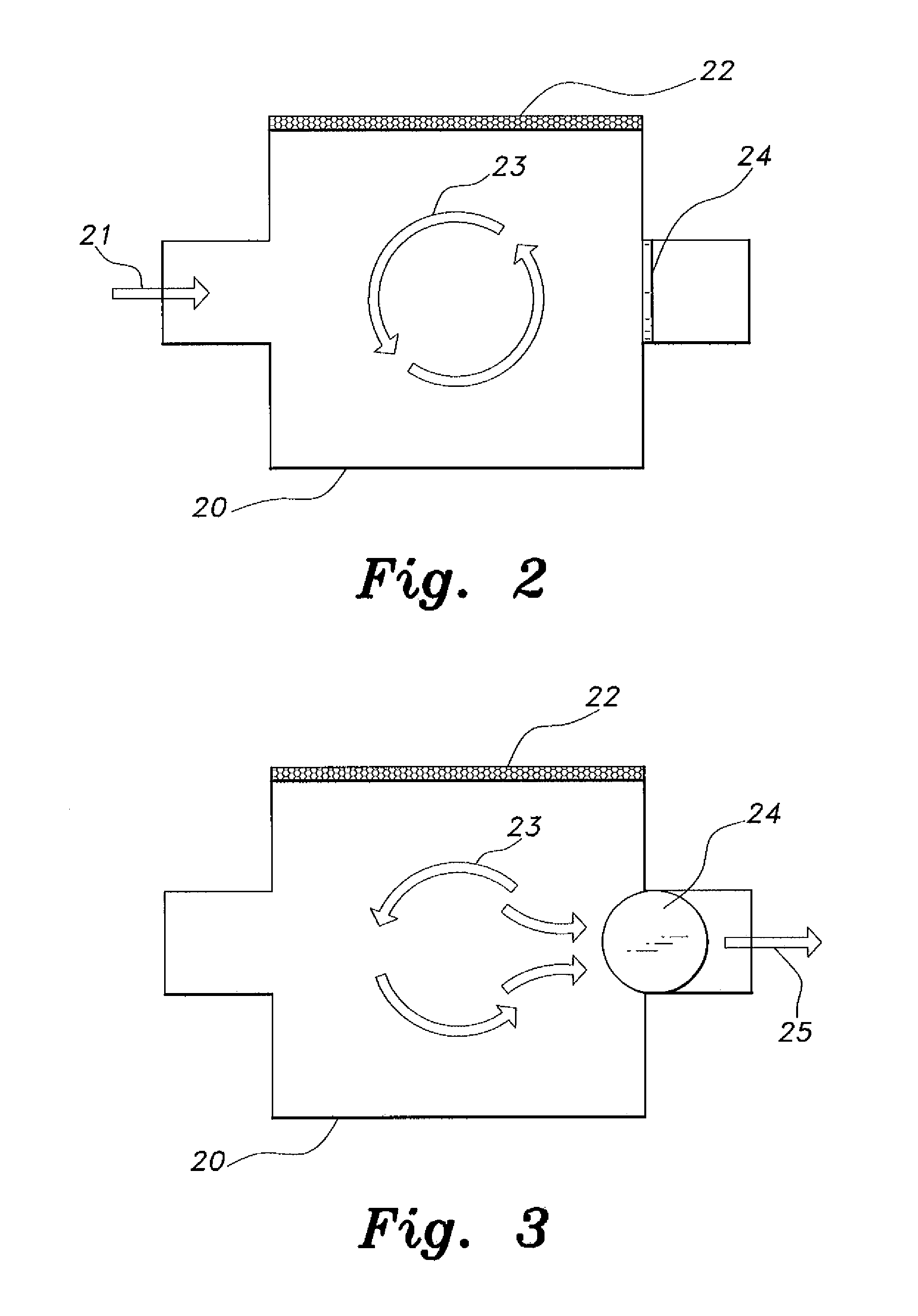Recirculating dryer
a dryer and circulating technology, applied in the field of recirculating dryers, can solve the problems of inefficient energy usage, inconvenient use, and insufficient heat energy utilization of traditional dryers,
- Summary
- Abstract
- Description
- Claims
- Application Information
AI Technical Summary
Benefits of technology
Problems solved by technology
Method used
Image
Examples
Embodiment Construction
[0016]The recirculating dryer, generally referred to by the reference number 10 in the drawings, dries laundry with minimal energy consumption by actively preventing continuous energy loss from continuous venting of the used air. Instead of continuous venting, the used air is recirculated in the drying environment. This results in more efficient use of energy input, e.g., for heating, as well as more efficient use of the potential thermal energy within the used air.
[0017]As shown in FIGS. 1-3, the recirculating dryer 10 includes a housing 12 for housing the internal mechanisms of the recirculating dryer 10, a lockable cover or door 14 pivotally mounted to a side of the housing 12, and an operator control panel 16. The housing 12 is preferably box-shaped, but other shapes, such as cylindrical and variations therebetween, can also be used in construction of the housing 12. The door 14 is shown attached to the side of the housing. However, the door 14 can also be installed on top of th...
PUM
 Login to View More
Login to View More Abstract
Description
Claims
Application Information
 Login to View More
Login to View More - R&D Engineer
- R&D Manager
- IP Professional
- Industry Leading Data Capabilities
- Powerful AI technology
- Patent DNA Extraction
Browse by: Latest US Patents, China's latest patents, Technical Efficacy Thesaurus, Application Domain, Technology Topic, Popular Technical Reports.
© 2024 PatSnap. All rights reserved.Legal|Privacy policy|Modern Slavery Act Transparency Statement|Sitemap|About US| Contact US: help@patsnap.com










